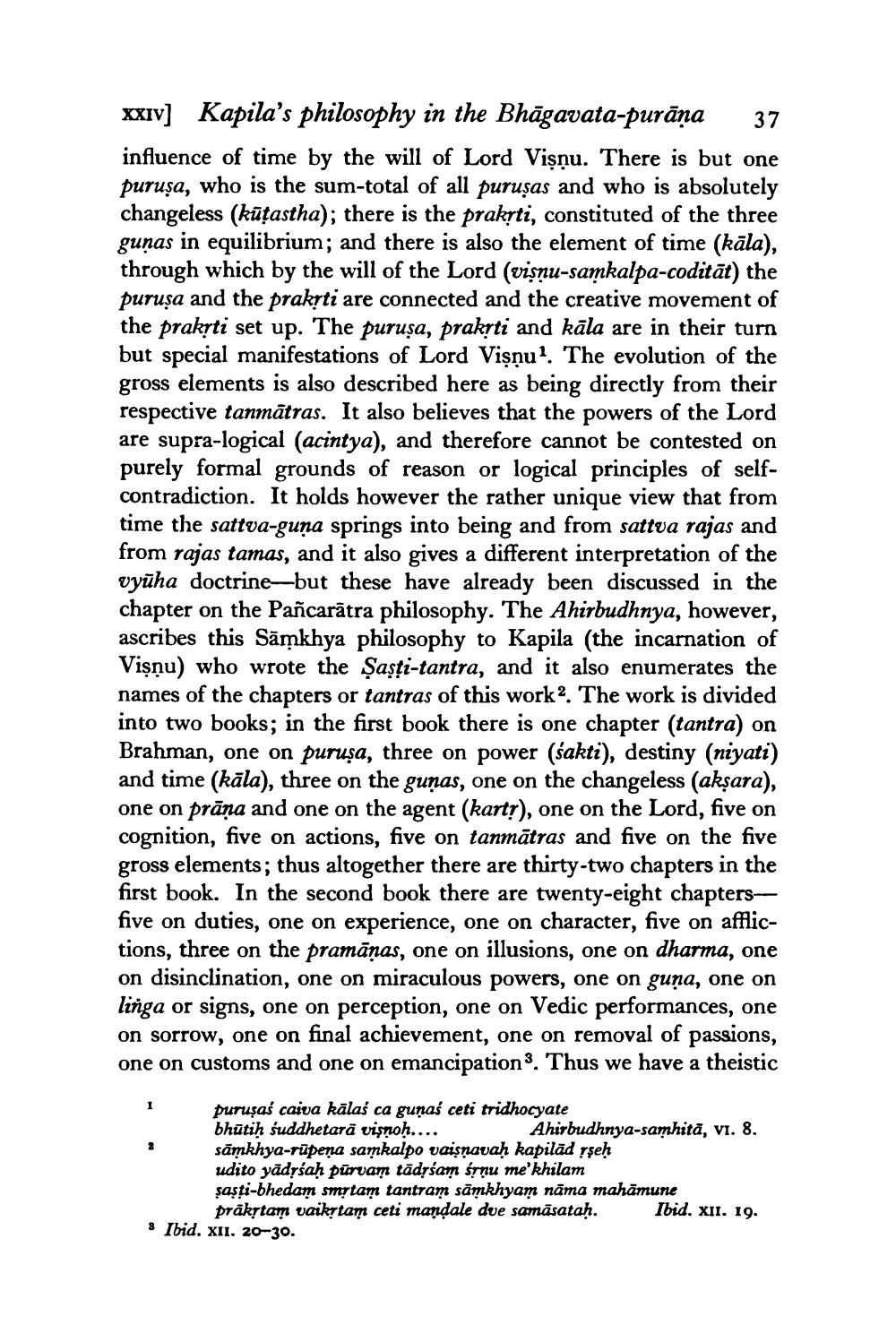________________
XXIV] Kapila's philosophy in the Bhāgavata-purāṇa
37
influence of time by the will of Lord Visņu. There is but one puruşa, who is the sum-total of all purușas and who is absolutely changeless (kūṭastha); there is the prakṛti, constituted of the three gunas in equilibrium; and there is also the element of time (kāla), through which by the will of the Lord (visnu-samkalpa-coditat) the puruşa and the prakṛti are connected and the creative movement of the prakṛti set up. The purușa, prakṛti and kāla are in their turn but special manifestations of Lord Vişnu1. The evolution of the gross elements is also described here as being directly from their respective tanmatras. It also believes that the powers of the Lord are supra-logical (acintya), and therefore cannot be contested on purely formal grounds of reason or logical principles of selfcontradiction. It holds however the rather unique view that from time the sattva-guna springs into being and from sattva rajas and from rajas tamas, and it also gives a different interpretation of the vyuha doctrine-but these have already been discussed in the chapter on the Pañcaratra philosophy. The Ahirbudhnya, however, ascribes this Samkhya philosophy to Kapila (the incarnation of Viṣṇu) who wrote the Saști-tantra, and it also enumerates the names of the chapters or tantras of this work. The work is divided into two books; in the first book there is one chapter (tantra) on Brahman, one on purușa, three on power (śakti), destiny (niyati) and time (kāla), three on the gunas, one on the changeless (akṣara), one on prāna and one on the agent (karty), one on the Lord, five on cognition, five on actions, five on tanmatras and five on the five gross elements; thus altogether there are thirty-two chapters in the first book. In the second book there are twenty-eight chaptersfive on duties, one on experience, one on character, five on afflictions, three on the pramānas, one on illusions, one on dharma, one on disinclination, one on miraculous powers, one on guna, one on linga or signs, one on perception, one on Vedic performances, one on sorrow, one on final achievement, one on removal of passions, one on customs and one on emancipation3. Thus we have a theistic
1
2
purusas caiva kālaś ca gunas ceti tridhocyate bhutiḥ śuddhetarā visnoḥ.... sāmkhya-rupena samkalpo vaisnavaḥ kapilad rşeh udito yādṛśaḥ purvam tādṛśam śrņu me'khilam sasti-bhedam smrtam tantram samkhyam nāma mahāmune prākṛtam vaikṛtam ceti mandale dve samāsataḥ.
8 Ibid. XII. 20-30.
Ahirbudhnya-samhita, vi. 8.
Ibid. XII. 19.




